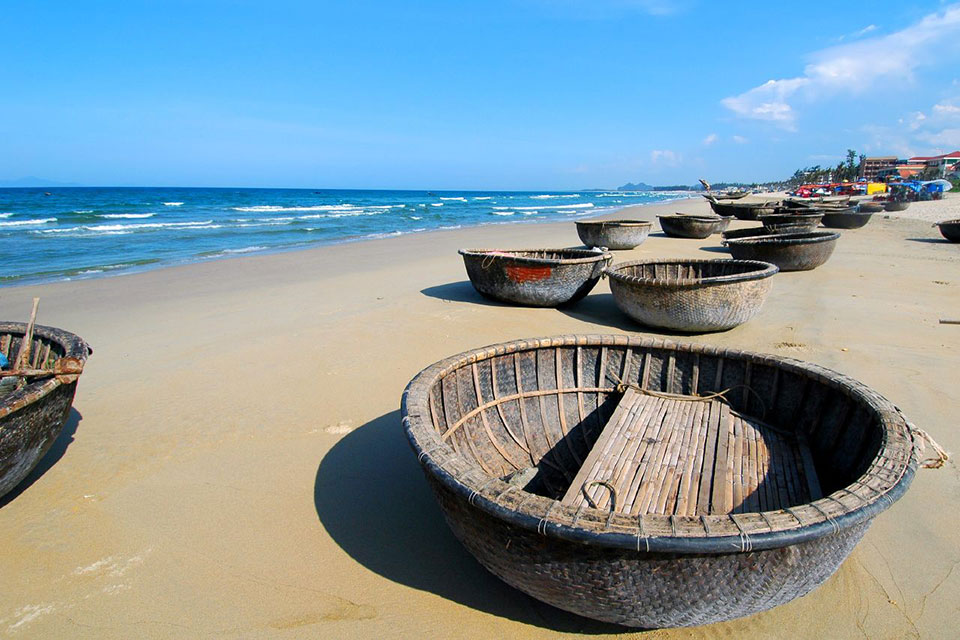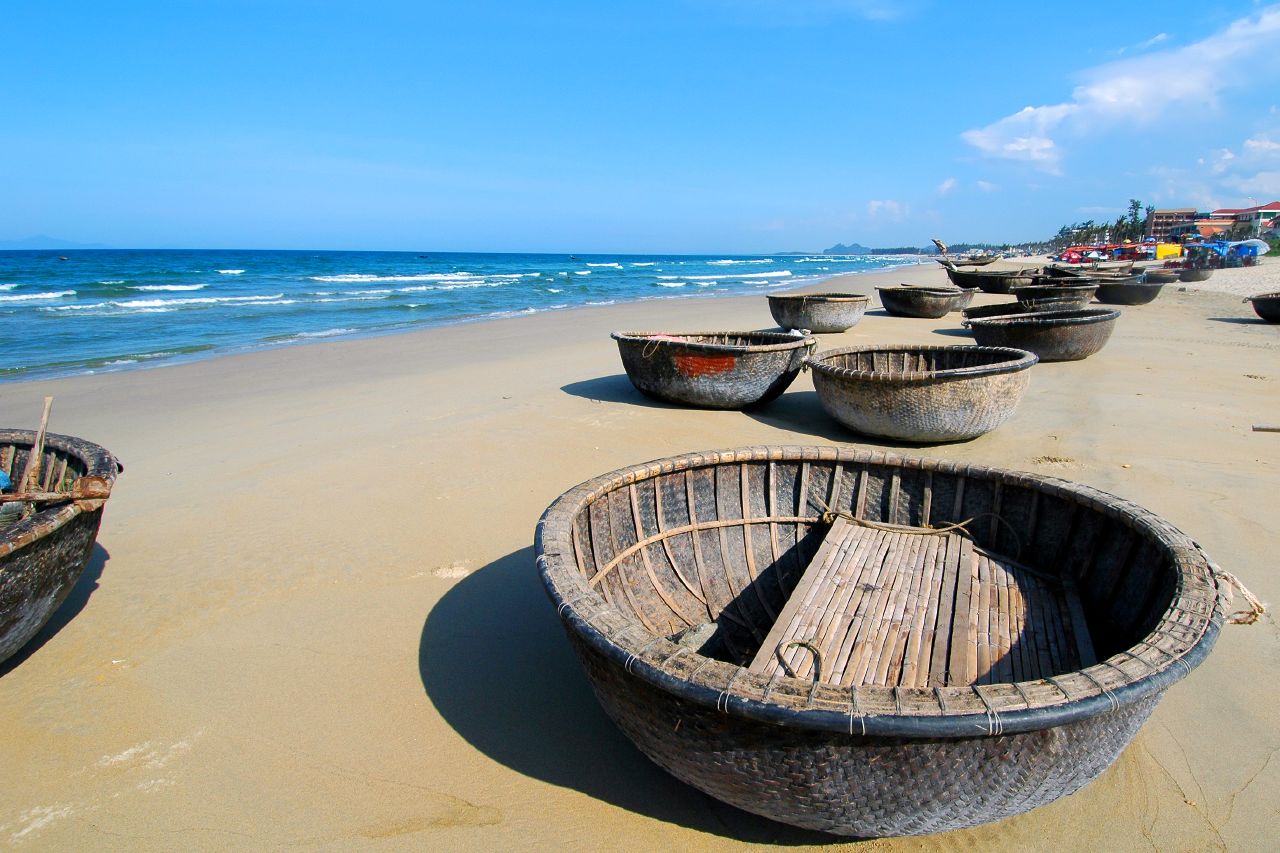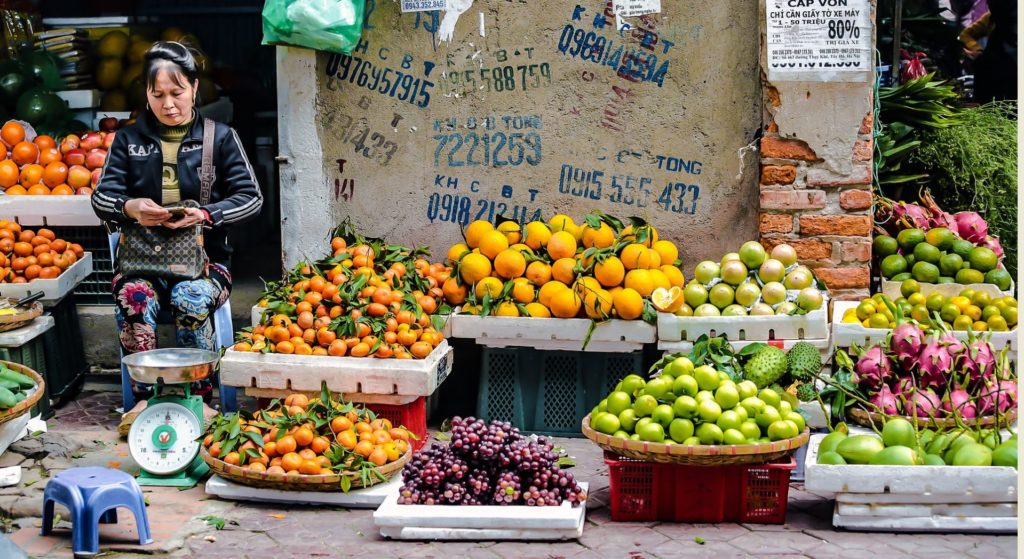
The port city of Da Nang, Vietnam’s 3rd largest city, is perfect for foodies. Famous for the fresh and bold flavors of Central Vietnamese cuisine, you can expect to taste your way through the streets on a walking or biking culinary tour.
While Da Nang has neither the atmosphere of Hanoi nor the hustle and bustle of Ho Chi Minh City, it has its fair share of sights and charms, thanks to its close proximity to UNESCO Heritage Sites, the old town of Hoi An and the imperial capital of Hue. Most of all, Da Nang has some of the prettiest and cleanest beaches you will find in Asia.
While in Da Nang, visit The Lady Buddha, explore the caves and grottos of the Marble Mountains and the My Son Sanctuary, the remains of the kingdom of Champa, which flourished from the 2nd to the 15th century.
Mỹ Sơn is an archaeological site, located in a remote forested valley, dating back more than a thousand years, in Quảng Nam. Formerly the capital and religious center of the Champa kingdom, Mỹ Sơn once contained more than 70 style temples and stupas. The bombing raids of the 1960s badly damaged more than half of them although some 20 odd structures still remain. Many statues, sculptures and reliefs recovered from Mỹ Sơn depicting daily activities as well as Hindu and Buddhist religious themes, are kept in the Museum of Cham Sculpture, near the Hàn River in the heart of Đà Nẵng.
The Marble Mountains, on the other hand, are rocky limestone outcrops jutting out of the beach just south of Đà Nẵng. Paths leading to the top of the forested cliffs offer spectacular views of Non Nuoc Beach and the South China Sea.
[photogrid ids=”572,571″ captions=”yes” columns=”four” fullwidth=”yes” ]
A 45-minute ride away is the ancient town of Hoi An. This exceptionally well-preserved South-East Asian trading port dating from the 15th to the 19th century was the largest harbour in Southeast Asia in the 1st century. Today, it offers its visitors a unique heritage site filled with buildings and streets that reflect both the indigenous and foreign influences of its time.
- 5 Korean Food I Enjoyed Most in Seoul - September 14, 2017
- 5 Reasons Why I Enjoyed Hanoi Street Food - October 10, 2016
- Destinations On The Rise : Da Nang, Vietnam - September 18, 2015

